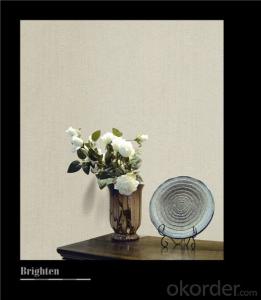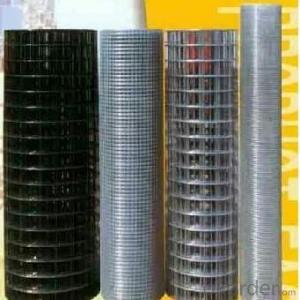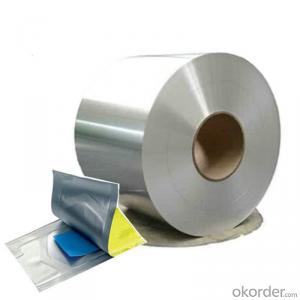Aluminum Plate 3/8 Thick
Aluminum Plate 3/8 Thick Related Searches
Led Light Bulbs For Ceiling Fixtures Led Lamps For Ceiling 42 In Ceiling Fan With Light Aluminum Coil Stock For Gutters Aluminum Foil For The Grill Hole Saw For Aluminum Plate Aluminum Tread Plate For Trailer Bow Plate For Aluminum Boat Aluminum Foil For Grow Room Aluminum Foil For Joint PainHot Searches
Stock Price For Aluminum Aluminum Coil Stock For Sale Aluminum Gutter Coil For Sale Used Aluminum Scaffolding For Sale 1/4 Aluminum Plate For Sale Aluminum Bar Stock For Sale Aluminum Round Stock For Sale Aluminum Diamond Plate For Sale Aluminum Scaffolding For Sale Craigslist 6061 Aluminum Plate For Sale Aluminum Dock Plate For Sale 7075 Aluminum Plate For Sale Aluminum Tread Plate For Sale Aluminum Checker Plate For Sale Aluminum Plate For Sale Near Me Plate Aluminum For Sale Aluminum Plate For Sale Aluminum Square Stock For Sale Aluminum Flat Stock For Sale Billet Aluminum Stock For SaleAluminum Plate 3/8 Thick Supplier & Manufacturer from China
Okorder.com is a professional Aluminum Plate 3/8 Thick supplier & manufacturer, offers integrated one-stop services including real-time quoting and online cargo tracking. We are funded by CNBM Group, a Fortune 500 enterprise and the largest Aluminum Plate 3/8 Thick firm in China.Hot Products
FAQ
- Indeed, heat sinks can utilize aluminum sheets. Due to its outstanding thermal conductivity, aluminum serves as an ideal substance for efficiently diverting heat away from electronic parts. With the ability to be fashioned into different dimensions and configurations, aluminum sheets can optimize the dispersion of heat. They find widespread employment in computer processors, LED lights, and power electronics, where the preservation of peak performance and the prevention of overheating hinge on effective heat dissipation. Moreover, the lightweight nature and cost-effectiveness of aluminum sheets render them highly favored for heat sink purposes.
- Yes, aluminum sheets are generally resistant to impact and vibration due to their inherent strength and flexibility.
- Yes, aluminum sheets are suitable for signage applications. Aluminum is a lightweight and durable material, making it perfect for outdoor signs that need to withstand various weather conditions. It is resistant to rust and corrosion, which ensures the longevity of the sign. Aluminum sheets can be easily customized and cut into different shapes and sizes, allowing for versatile and creative signage options. Additionally, aluminum is a great material for digital printing and can provide high-quality graphics and images. Overall, aluminum sheets offer excellent durability, versatility, and aesthetic appeal, making them a popular choice for signage applications.
- Aluminum sheet adhesive bonding can be enhanced through various surface treatment methods. These methods aim to improve the strength and durability of the adhesive joint. Some commonly employed techniques include: 1. Enhancing mechanical interlock: One approach involves roughening the aluminum surface using sandblasting, abrasion, or wire brushing. This creates a stronger mechanical interlock between the adhesive and the aluminum, ultimately increasing bond strength. 2. Chemical treatment for surface improvement: Chemical treatments can eliminate contaminants, oxidation, or corrosion from the aluminum surface. Acid etching, chromate conversion coating, or anodizing are commonly used methods. These treatments enhance surface cleanliness and promote adhesion by creating a chemically reactive surface for the adhesive. 3. Plasma treatment: Exposing the aluminum surface to a low-temperature plasma discharge modifies the surface energy and eliminates contaminants. This treatment enhances the adhesive's wettability and adhesion. 4. Primer coating: Applying a primer coat on the aluminum surface facilitates chemical bonding between the adhesive and the substrate. Primers are designed specifically to enhance adhesion to certain substrates, thereby improving bond strength and durability. 5. Surface activation: Techniques like flame treatment or corona treatment can increase the surface energy of the aluminum sheet. These methods generate free radicals on the surface, thereby improving the adhesive's bonding characteristics. It's worth noting that the choice of surface treatment method depends on factors such as the specific adhesive used, desired bond strength, application requirements, and the condition of the aluminum surface. It is advisable to consult adhesive manufacturers or experts to determine the most suitable surface treatment method for a particular adhesive bonding application.
- 1mm the aluminum plate is pulled to the height of 45mm. Can I pull it out at 1? How much space should I put in?
- How much clearance does aluminum plate stretch?The clearance value of the stretched aluminum plate is =1.3~1.4t (first stretch), 1.15~1.2t (second times stretch), and 1.1t (last stretch). The tensile properties of aluminum sheets are inferior to those of low carbon steel, and they are easily broken when stretched. The tensile height 45mm depends on the diameter of the drawing piece.A cylindrical part of a large cross-sectional area from a material to a small cross section is called a tensile coefficient. That is, the ratio of the cross-sectional area to the cross-sectional area before stretching, i.e., m=A0/An-1. For cylindrical parts, m1=d1/D0, the coefficient of the first stretch can be around 0.5, i.e., the diameter after the first stretch is 1/2 of the blank diameter before the drawing. In the future, the tensile coefficients are usually around 0.7~0.8. The calculation of drawing blank, roughly calculate the blank size according to the principle of equal area of the blank before and after the drawing.
- Yes, 101 aluminum sheets can be used in the construction industry. Aluminum sheets are commonly used in construction due to their lightweight nature, durability, and corrosion resistance. The specific grade of aluminum, in this case, 101, may refer to the alloy composition and properties of the aluminum sheets. While there are numerous aluminum alloys available, each with its own unique characteristics, 101 aluminum sheets can certainly be utilized in various construction applications. However, it is important to note that the suitability of aluminum sheets for specific construction projects may depend on factors such as the required strength, load-bearing capacity, and environmental conditions. Therefore, it is advisable to consult with engineers or construction professionals to determine the most appropriate type and grade of aluminum sheets for a specific construction project.
- The weight of aluminum sheets may differ based on the thickness and dimensions of the sheet. In general, thin sheets can weigh approximately 2.7 grams per square centimeter (g/cm^2), while thicker sheets can weigh around 6.9 g/cm^2. Nevertheless, it is crucial to acknowledge that these figures are approximate and may slightly fluctuate depending on the specific alloy and manufacturing technique employed. Consequently, it is advisable to seek precise weight specifications from the manufacturer or supplier when dealing with a specific aluminum sheet.














































